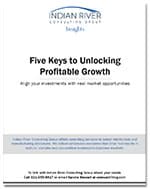
The first key to building a successful market access strategy is to understand how demand is created.
Our firm’s research has shown that a high percentage of most distributors’ business is fundamentally bought, not sold. In the HVACR industry, we found that, over a two-year period, customers did not deliberately switch suppliers or products about 90% of the time, according to research done for the Heating, Air-conditioning and Refrigeration Distributors International (HARDI). In other words, the decision to buy was made entirely by the customer without any direct influence by the sales force or marketing department. (You can read more about those results in the book we collaborated with the HARDI Foundation on, Myths & Misperceptions: How Markets Are Really Made in HVACR.)
When your product is being bought you should invest in protecting the business, not in demand creation. This means ensuring that customers never experience a reason to look elsewhere. Distributors often consider customer service to be humdrum, somehow less strategic than offensive selling. In fact, many distributors would benefit from investing more to ensure they are boringly reliable.
The goal of protection is no drama, no excitement and no reason to change. Protection means ensuring that critical inventory and transactional services are provided consistently and reliably for existing customers.
In the HARDI study cited previously, we found that about 8% of distributors’ customers switched suppliers or products because of a problem or change within their own organizations. They were not swayed by a persuasive sales rep. Rather the change was induced by something outside a sales rep’s control, such as a new design requirement, a performance failure by the incumbent supplier or a buyer retiring. The sales rep was simply at the right place at the right time, backed by the company’s well-earned reputation.
In these scenarios, the key is to successfully intercept these opportunities, which we call critical selling events. It’s more important to have good coverage of your customers, so that you have visibility of these events, than to have the absolute best sales rep making constant sales calls.
Based on these numbers, only about 2% of the business remains to be proactively sold by your sales rep. We refer to this as disruption selling. This is the classic “let me show you what you’ve been missing” sales role that most of us envision when we think of a great salesperson.
Do you really know how much of your revenue growth comes from protection, interception and disruption? Do your sales and marketing resources reflect this mix?
The next blog in this series will examine why it’s important to provide different levels of service to different customer segments.
